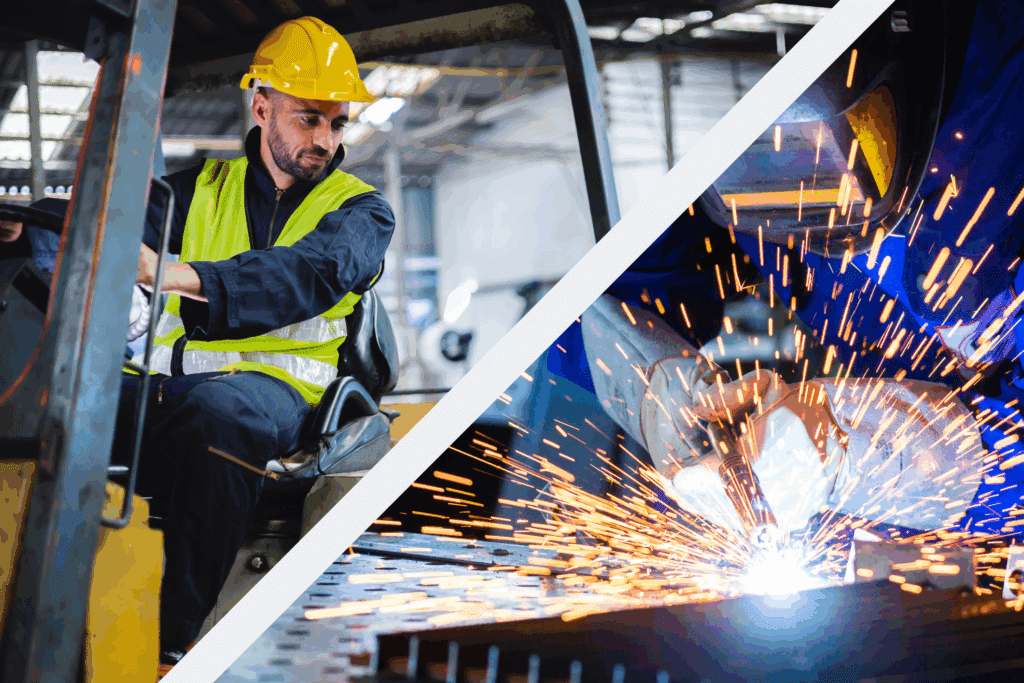
Businesses that use or house any type of equipment must comply with UK safety legislations. Two of the most important regulations are LOLER and PUWER. Although they are often mentioned together, they serve different purposes. Understanding LOLER vs PUWER is essential for legal compliance, safer operations, and effective asset management.
In this guide, we explain what LOLER and PUWER mean, the differences between them, and how organisations can stay compliant.
What Is PUWER (Provision and Use of Work Equipment Regulations)?
PUWER, the Provision and Use of Work Equipment Regulations 1998, applies to all work equipment used in the workplace. This includes machinery, tools, automation systems, and motion-control equipment.
Under PUWER, employers must ensure that:
- Equipment is suitable for its intended task
- Machinery is safe to use, properly maintained, and regularly inspected
- Users receive adequate training and instruction
- Equipment has appropriate safety features, such as guards and emergency stops
- Risks associated with use are identified and controlled
In summary, PUWER sets the baseline legal requirements for equipment safety across all industries.
Examples of Equipment That Falls Under PUWER
PUWER applies to all workplace equipment, whether powered or manual. This includes anything used by employees during work operations.
General Work Equipment
- Power tools (drills, grinders, saws)
- Hand tools
- Pressure washers and air compressors
- Workshop machinery such as lathes, planers, or milling machines
Industrial Machinery and Motion-Control Systems
- Conveyor systems
- Automated production lines
- Robotics and motion-control equipment
- Packaging and processing machines
Non-Lifting Vehicles and Mobile Work Equipment
- Warehouse trolleys and pallet trucks
- Agricultural machinery such as tractors or harvesters
Office and Facility Equipment
- Laptops
- Screens
- Kitchen appliances
- HVAC systems
- Powered doors and shutters
- Printing and binding machinery
If equipment is used at work and presents a risk during operation, PUWER applies.
What Is LOLER? (Lifting Operations and Lifting Equipment Regulations)
LOLER, the Lifting Operations and Lifting Equipment Regulations 1998, applies specifically to lifting equipment and lifting operations. This includes hoists, cranes, lifting accessories, rigging systems, and any equipment used to lift loads or people.
LOLER requires employers to:
- Ensure lifting operations are properly planned, supervised, and executed safely
- Use lifting equipment that is strong, stable, and fit for purpose
- Maintain lifting accessories such as slings and chains to a safe standard
- Conduct thorough examinations at legally required intervals
- Keep detailed written reports completed by a competent person
LOLER is therefore more specialised than PUWER, focusing on the unique risks associated with lifting activities.
Examples of Equipment That Requires LOLER Inspections
LOLER applies specifically to lifting equipment and lifting accessories. The following items typically require LOLER thorough examinations at the legally defined intervals:
Lifting Machines
- Overhead cranes
- Tower cranes and mobile cranes
- Goods and passenger lifts
- Hoists and winches
- Stage and entertainment rigging hoists
- Vehicle tail lifts
- Forklift trucks (lifting mechanisms and attachments)
Lifting Accessories
- Slings (chain, wire rope, textile, round slings)
- Shackles, eyebolts, and hooks
- Chains and chain blocks
- Spreader beams and lifting frames
- Magnetic and vacuum lifting devices
- Load arresters and safety blocks
Equipment Used to Lift People
- MEWPs (Mobile Elevating Work Platforms)
- Suspended access platforms
- Personnel cages or man baskets
- Aerial lifts used in construction or maintenance
If equipment is used to lift a load or a person, LOLER is likely to apply.
LOLER vs PUWER: What Are the Key Differences?
Although both regulations aim to improve workplace safety, the differences between LOLER and PUWER are important:
Scope
- PUWER covers all work equipment.
- LOLER covers only lifting equipment and lifting operations.
Purpose
- PUWER ensures equipment is safe to use.
- LOLER ensures lifting operations are planned, controlled, and carried out safely.
Inspection Requirements
- Under PUWER, inspections are required when equipment poses a significant risk.
- Under LOLER, regular thorough examinations are mandatory (usually every 6 or 12 months).
Competency
- PUWER requires users to be trained and competent.
- LOLER requires examinations and lifting plans to be carried out by a competent person with specialist knowledge.
Record Keeping
- PUWER has general documentation expectations.
- LOLER requires formal records of all thorough examinations.
Understanding these differences helps organisations ensure they meet every legal obligation and avoid costly compliance failures.
Why LOLER and PUWER Compliance Matters
Failure to meet LOLER or PUWER requirements can lead to:
- Increased accident risk
- Legal penalties and enforcement action
- Damage to equipment or property
- Operational downtime
- Reputational harm
By implementing effective equipment-management processes, companies can maintain safety, reduce risk, and ensure compliance with both regulations.
How Motion Software Supports LOLER and PUWER Compliance
Modern inspection and compliance software can make LOLER and PUWER compliance significantly easier. With digital record-keeping, inspection scheduling, and automated reminders, organisations can:
- Maintain clear documentation for audits
- Easily track LOLER thorough examination dates
- Schedule PUWER inspections and servicing
- Reduce human error in compliance management
- Improve operational efficiency and equipment uptime
For businesses managing complex machinery or lifting equipment, these tools streamline compliance and ensure safer, more reliable operations.
LOLER and PUWER are central to workplace safety in the UK. While PUWER applies to all equipment, LOLER applies specifically to lifting equipment and operations. Understanding the difference ensures organisations remain compliant, protect workers, and maintain safe systems of work.

